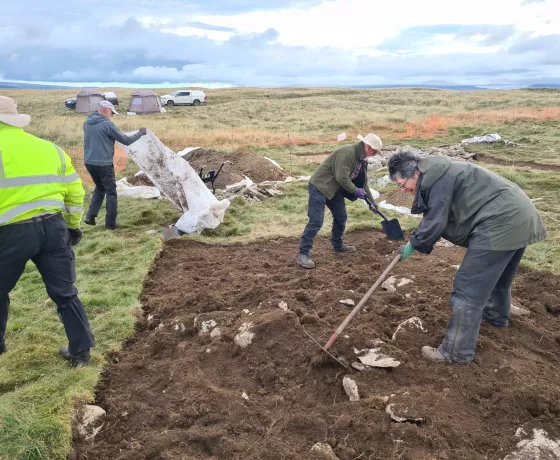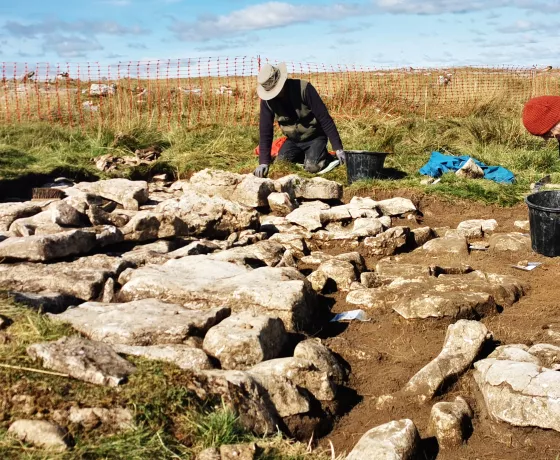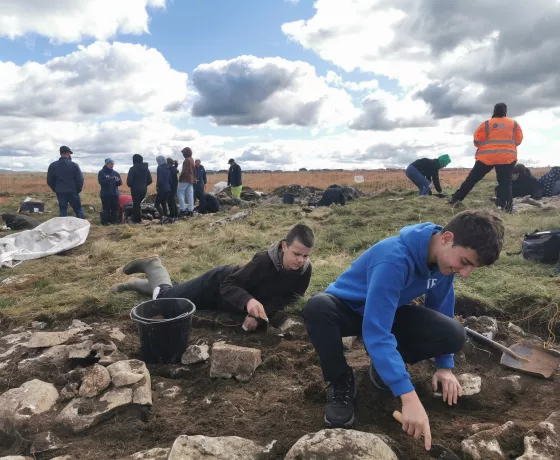Today the weather was warm, dry and comfortable, and we have had some interesting developments. Excavation of the first trench over the outer bank of the enclosed settlement was continued and has revealed more of the character of the outer bank, which was clearly constructed on top of pavement. Once fully recorded we are proposing to cut through the bank to get a section through the wall and hopefully reveal buried organic deposits.

Jan took on the excavation of a new trench located across one of the cross coaxial banks. Closer examination of this showed that it had the potential to be a lynchet. Lynchets are formed when plough activity extends up to the line of a field boundary. The loosened soil can then wash downslope in the rain over time, and there is left a noticeable drop in height immediately downslope of the boundary. In the excavation on this slope were found a deposit of tiny fragmented bits of pavement, which could reflect plough damage. Following on from this, it was observed that there were other enclosures / plots with lynchets (these will be examined later) in the area and it is becoming evident that there had been a lot of plough activity associated with these co-axial boundaries. This demonstrates that we have cultivation / arable activity rather than simply pastoral farming and adds to our understanding of what was happening within these areas.


Looking forward to seeing what comes up tomorrow, which is now looking to be a dry weather day.
Other posts in this collection
Read our latest posts about the Little Asby community excavation.




